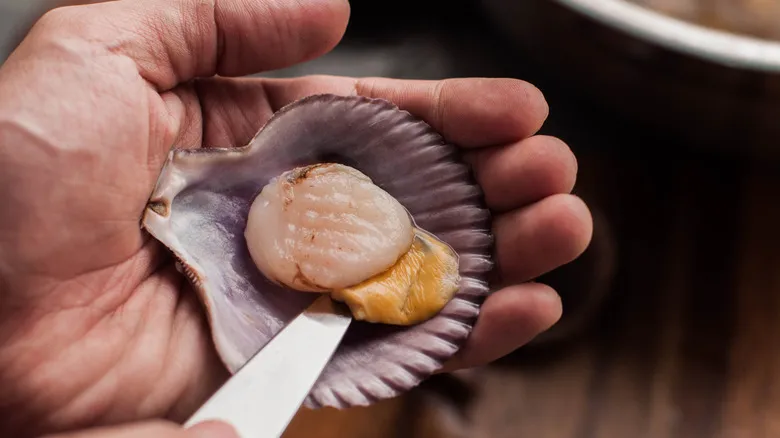Give it a sniff
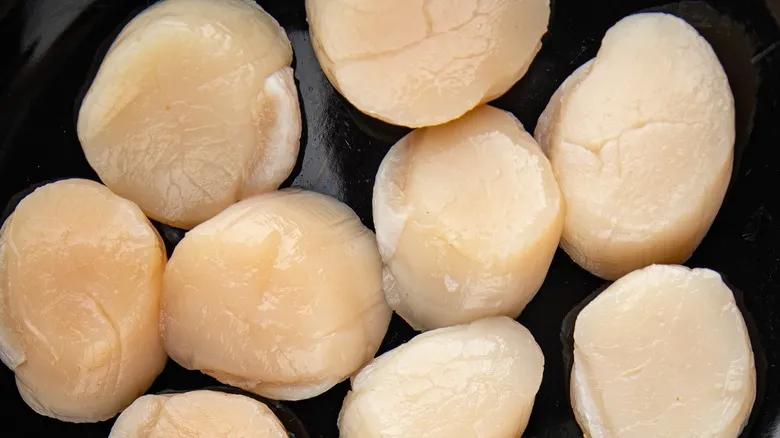
To begin with, a quality scallop should possess a very particular aroma; they should never have a fishy scent. They shouldn't be strong, fermented, or emit any metallic or iodine-like odors. Instead, good scallops should evoke the essence of the sea—fresh and slightly briny. We're not referring to the smell under the boardwalk at the Jersey shore on a sweltering summer day.
In contrast, imitation scallops do have a fishy odor. Recall the last time you sniffed a piece of cod or the lingering scent at the seafood counter. While it may not be unpleasant or spoiled, it is unmistakably fishy. Imitation scallops would emit such a smell, as they are often made from fish like shark (which is frequently banned due to high mercury levels), skate, stingray, or surimi, rather than from the sweet bivalve we seek.
Check the taste and texture
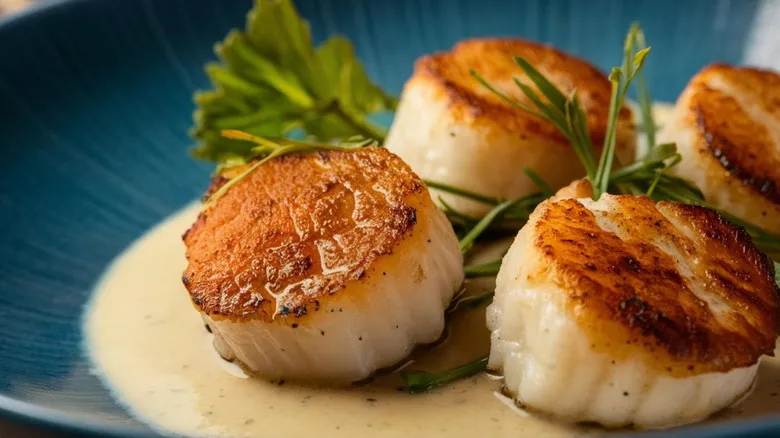
Is your taste sophisticated enough to distinguish between genuine scallops and their imitation counterparts? There are several indicators to help you identify them. A true bay scallop — the smaller variety — is sweet and possesses a briny flavor reminiscent of seaweed. The larger sea scallop is also sweet, though not as intensely as its smaller relative, and it carries a similar salinity. Importantly, neither type has a fishy flavor. Authentic scallops feature fibers running through them, as they are muscles that keep a shell closed, providing a distinct texture.
In contrast, imitation scallops, which may be made from stingray, skate, shark, or surimi, have a noticeably fishy taste, akin to that of pollock, flounder, or even tilapia fillets. They lack any sweetness and, when bitten into, will not exhibit the same fibrous texture found in real scallops; instead, they will feel denser.
Take a good, hard look
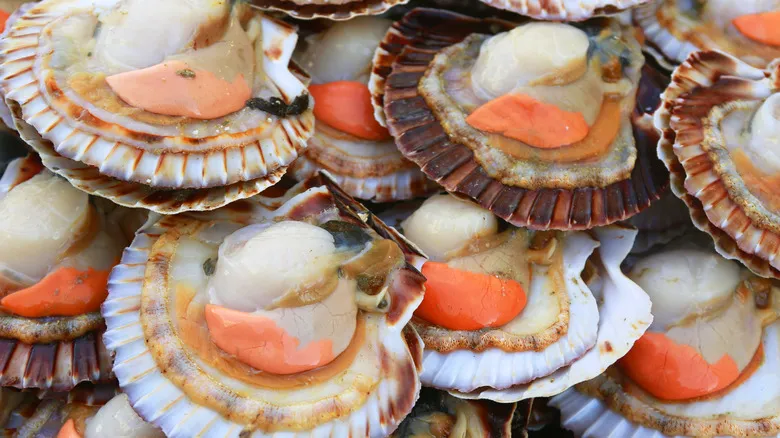
Your eyes can assist you in identifying a fake scallop before your taste buds do. Genuine scallops—whether bay or sea—come in a wide range of sizes, lacking uniformity. They typically exhibit colors like beige, pinkish, or off-white, with some possibly showing a more orange hue. Bright white scallops are uncommon; they are firm and have a translucent appearance before cooking. In contrast, imitation scallops tend to be uniform in size and density, as they are essentially cut out from shark, skate, surimi, or stingray meat using a cookie-cutter-like tool.
Location, location, location
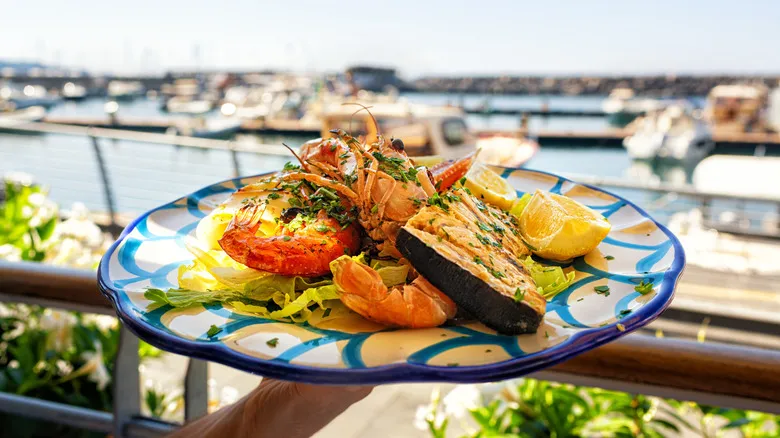
Where are you savoring those scallops? Are you cozied up in a beachfront bungalow eatery by the shore? Or are you at your local Red Lobster in a landlocked area? Clearly, fresh, in-season scallops are much more accessible if you're near the ocean, as fishmongers are more likely to be nearby, offering their catch close to the restaurant. It's crucial for scallops to move from ocean to plate quickly, as they don't remain fresh for long once out of the water. If a restaurant lacks the budget for the extra transportation and labor costs, it's unlikely they would feature scallops on their menu.
Evaluate the price point
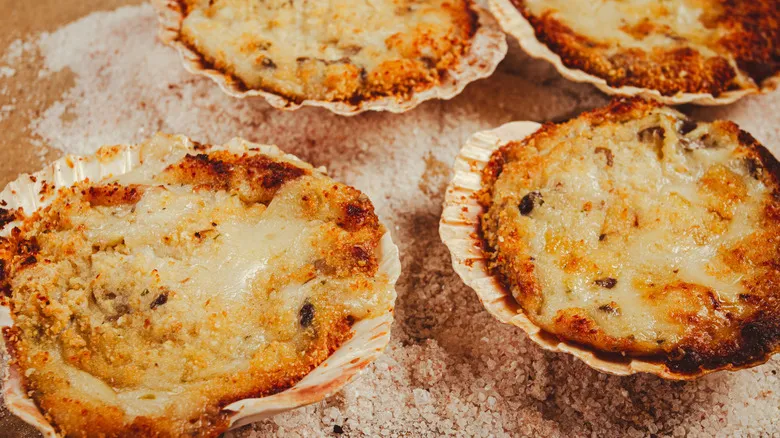
Scallops, whether from the sea or the bay, tend to be on the higher end of the seafood price range. This can be attributed to several reasons. Unlike more easily farmed seafood such as salmon, tilapia, mussels, or even crab, scallops are quite challenging to cultivate, which means that markets rely heavily on wild-caught scallops. Once harvested, scallops begin to deteriorate rapidly, necessitating a swift transition from catch to plate at your favorite restaurant, which further increases their cost.
Therefore, if you find yourself at a restaurant (or a budget-friendly takeout spot) and notice scallops priced unusually low, it’s wise to be cautious. While it’s unlikely that a James Beard-nominated establishment would serve imitation scallops, a fast-food joint offering fried scallops for just $5 should definitely raise some eyebrows.
Recommended
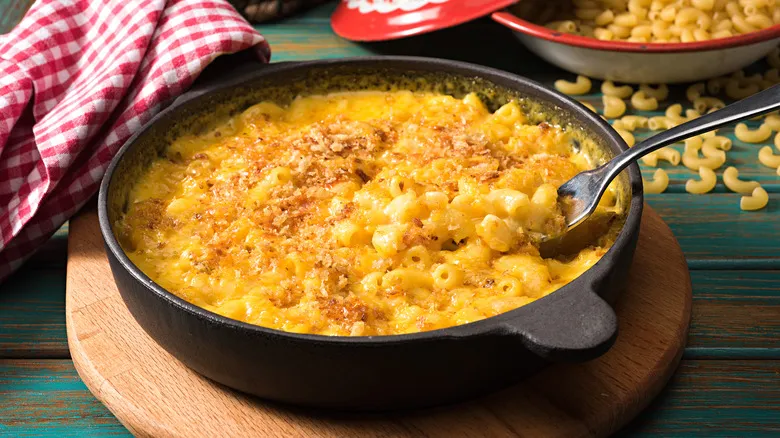
How To Reheat Leftover Mac And Cheese For The Best Texture
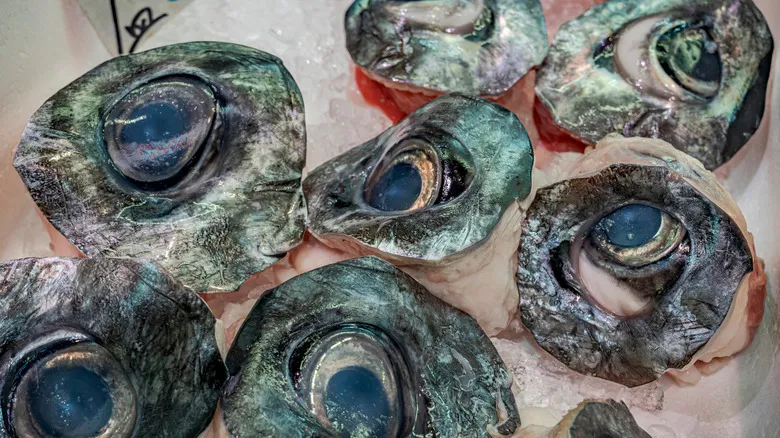
Yes, You Can Eat Fish Eyes. Here's How To Cook Them

Can You Sous Vide A Frozen Steak?

How To Make Your Own Breakfast 'Tacos' At McDonald's
Next up

